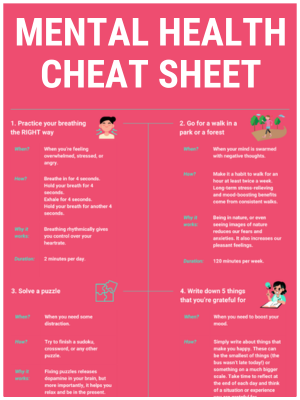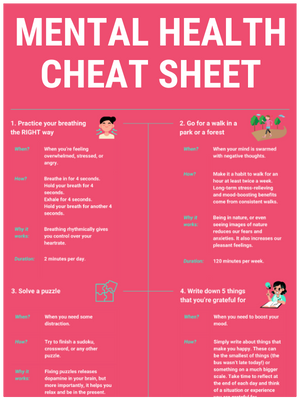We pay more attention to what we stand to lose than what we might gain – our imaginings of what could go wrong overrides our fantasy of what could go right. The idea of losing in one way or another is enough to stop us from striving and trying.
The cognitive bias of loss aversion is a primitive brain trick of self-preservation. Anything involving a loss risk sends our brain into loss aversion mode. This loss aversion mode occurs irrespective of what we stand to gain.
This article will look at the cognitive bias of loss aversion. We will explain loss aversion and provide examples, studies, and tips to help you overcome this detrimental cognitive bias.
Contents
What is loss aversion?
Loss aversion is a cognitive bias that guides us to view potential losses as more significant than a gain of a similar magnitude. Therefore, we minimize our risk of loss or failure by not trying in the first place.
According to the creators of the concept of loss aversion, Daniel Kahneman and Amos Tversky, the pain we experience from losses is double the perceived joy we experience from gains.
Loss aversion is inextricably linked with risk aversion. The discomfort we experience from losses, failures, and setbacks can influence our decision-making processes, leading us to take fewer risks.
Instead of focusing on what could go right, we indulge in the idea of what could go wrong. This risk aversion influences our decision-making process, and we keep ourselves safe and small.
What are examples of loss aversion?
Loss aversion is all around us, even from a young age.
You only need to observe how a young child reacts to losing a toy they are playing with versus their reaction to a new toy —the upset of loss certainly overshadows the joy of gain.
In my twenties, I was terrible at initiating contact with people I was attracted to. The idea of rejection and being laughed at superseded any notion of a happy, budding romance.
Even now, as a running coach, I have athletes reluctant to sign up for particularly challenging races. And yet, brave athletes feel fear about a race or personal endeavor and proceed regardless. They channel their courage, lean into their vulnerability and make friends with fear.
Studies on loss aversion?
A fascinating study on loss aversion by Daniel Kahneman and Amos Tversky examined the risk participants were willing to take in a gambling situation. They simulated two scenarios, each with guaranteed financial losses and gains. They found loss aversion comes into play in this scenario, and participants were more willing to take risks to avoid a loss than to take on a similar risk to achieve a gain.
It’s not just human beings that are susceptible to loss aversion. In this study from 2008, authors used the removal or addition of food to create a loss or gain experience for capuchin monkeys. The behaviors of the monkeys were recorded and analyzed, showing consistent trends with loss aversion theory.
💡 By the way: Do you find it hard to be happy and in control of your life? It may not be your fault. To help you feel better, we’ve condensed the information of 100’s of articles into a 10-step mental health cheat sheet to help you be more in control. 👇
How does loss aversion affect your mental health?
If you are affected by loss aversion, you may experience an internal knowing that you have the potential to do and be so much more than you currently are. You likely feel stagnant.
When loss aversion strikes, we don’t even bother putting ourselves in the line of success. Not setting ourselves up for success causes us to lead a monotone life. To avoid the lows, we obliterate our chances of highs. And this leads to a feeling of flatlining and merely existing, not living.
Our compliance with loss aversion keeps us well and truly stuck within our comfort zone. Our comfort zone is our safe zone. There’s nothing particularly wrong with it, but there’s nothing right with it, either. Just outside our comfort zone is the growth zone. The growth zone is where the magic happens. It requires us to have confidence and to flirt with risk before we can step out of our comfort zone and into the growth zone.
When we learn to leave our comfort zones, we start taking our life off cruise control and living with intention. Leaving our comfort zone invites vibrancy into our world.
5 tips to overcome loss aversion
We all suffer from loss aversion to some extent, but we can learn how to overcome the automatic need for self-preservation.
Here are our 5 tips to help you overcome loss aversion.
1. Reframe your view of loss
Consider a trail runner that has to climb mountains in a race. Each step is a calculated fall when a mountain runner descends treacherous peaks. She does not fear falling as she has learned to use the motion of falling to her advantage. Falling is all part of the mountain runners’ downhill running process. If she hesitated, she would tumble. But she continues with an even stride making it near impossible for the onlooker to recognize each near miss.
We associate loss with failure, and nobody wants to fail. Yet, only those who fail can succeed.
In our article on how to accept failure and move on, we highlight that courage is the connecting force between all our failures. The courage to step out of our comfort zone is needed to try something and put ourselves out there.
If you can reframe your view of loss and failure, you can reduce your fear of it. And this reduction of fear of loss will reduce your aversion to it. Be a mountain runner, take the falls in your stride, and keep going.
2. Pay attention to the gains
Pay attention to what you might gain instead of focusing on what you stand to lose.
While enduring the mental turmoil of whether or not to break up with my ex, I visualized everything I would lose and the difficult road ahead. The decision was easy as soon as I switched my mindset and focused on what I would gain. My gain was happiness, freedom, and agency in my own life. My losses, while difficult in the moment, would not endure.
If you have a difficult decision, try focusing on the gains before you become trapped in inertia by the losses.
3. Filter out other people’s comments
You can develop your self-awareness into your biases but can’t control the people around you. So even when you become comfortable with the risk of losing whatever you are exposing yourself to, other people will try to talk you down.
When I set up a small business, I thought my nearest and dearest would be full of support for me. In reality, several people projected their fears of loss and failure onto me.
- “But how do you know it will work?”
- “Surely you don’t have the time to do that now?”
- “Do you even know if there is a need for this?”
- “What’s the point?”
Don’t allow other people to scaremonger you or incite fear. Their fears do not reflect your chances of success; their words reflect their insecurities and have nothing to do with you.
4. Review the sunk cost fallacy
It doesn’t matter how much time you have committed to something. If it isn’t working, cut ties and move on.
The sunk cost fallacy comes into play here. The more time or money we invest into something, there more reluctant we are to quit when it’s not working.
I’ve stayed in expired relationships for too long for fear of losing the relationship being harder than gaining my freedom. Funnily enough, no one ever regrets exiting a toxic relationship, but making that final decision is tough!
Be brave and cut your losses. Cutting your losses looks like many things; it may mean ending a romantic relationship, a friendship, a business, a project, or anything else you’ve invested time, energy, and money in.
5. Quieten the “what if” voice
Part of being human means making difficult decisions. It’s only natural to choose one course of action and then dwell over what might have been if we had chosen a different path. This thought process is normal but unhealthy and can increase your susceptibility to loss aversion.
Learn to silence your “what ifs”; this means making decisions, owning them, and not ruminating on what might have been. There’s no need to analyze your speculation on other possible outcomes. Conjecture is biased and is your brain’s way of gathering unbalanced evidence to reaffirm loss affirmation; stay astute to this, and don’t allow your brain to indulge in this dialogue.
💡 By the way: If you want to start feeling better and more productive, I’ve condensed the information of 100’s of our articles into a 10-step mental health cheat sheet here. 👇
This Cheat Sheet Will Help You Be Happier and More Productive
Thrive under stress and crush your goals with these 10 unique tips for your mental health.
Wrapping up
We all suffer from loss aversion from time to time. The trick is not allowing it to dictate our lives and prevent us from experiencing the magic and wonder of being human.
You can overcome your susceptibility to the loss aversion bias through the five tips outlined in this article.
- Reframe your view of loss.
- Pay attention to the gains.
- Filter out other people’s comments.
- Review the sunk cost fallacy.
- Quieten the “what if” voice.
Do you have any tips for how to overcome the loss aversion bias? I’d love to hear from you in the comments below!



